TO
1 - 200 of 68
| Title | Date | Subject | Description | ||
|---|---|---|---|---|---|
| 1 |
 |
"Regulatory and analyzer update for USEPA's new formaldehyde emissions limit for combustion turbines" | 2019 | Spectrum's technical team has demonstrated a <27 ppbvd Formaldehyde detection limit (DL) on its extractive FTIR equipped using a 5-meter cell pathlength. This formaldehyde detection is well below USEPA's 91 ppbvd emission threshold for Combustion Turbines now subject to regulation under NESHAP Subpa... | |
| 2 |
 |
2013 Faculty Report; 2013 General Catalog | 2013 | University of Utah catalogue; (Catalog) | The faculty report is generated by USpace through Academic Computing Services. It is provided as a companion to the Web archived version of the University of Utah catalogue;, found at http://content.lib.utah.edu/cdm/ref/collection/ir-eua/id/3113 |
| 3 |
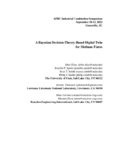 |
A bayesian decision-theory-based digital twin for methane flares | 2022 | Ground flares operate in a high-turndown, standby configuration for a significant portion of their operating life, being fully utilized only under process upset scenarios or emergencies. The low-momentum flow results in poor fuel-air mixing near the flare tip, leading to decreased overall combustion... | |
| 4 |
 |
A chemical kinetics approach for heavy fuel oils gasification modelling | 2022 | surrogate; HFOs; pyrolysis; chemical kinetics modeling; Gassification | Refinery oil residue commonly considered the bottom of the barrel, can no longer be a waste. The increasing energy demand and the constant depletion of light oil supply make it crucial to find a suitable way to convert residual oils into valuable fuels. The gasification process represents a possible... |
| 5 |
 |
A volume of fluid approach to model injection of highly viscous fluids | 2022 | Despite the transition to renewable energy sources, fossil fuels will still play a significant role in satisfying the world's energy needs shortly. In addition, the rise in the demand for light distillates and the depletion of light crude oil reservoirs are shifting the interest toward the conversio... | |
| 6 |
 |
Advanced emissions monitoring from elevated gas flares for early warning system and optimization of plant operations | 2019 | Real-time monitoring of emissions from elevated gas flares is very difficult and expensive due to the relative location of the source and the cost to collect samples for analysis. Elevated Analytics has developed and applied a UAV based sensor system to accomplish this task. Besides providing a snap... | |
| 7 |
 |
The advantages of monitoring flare pilots with instantaneous response | 2020 | This paper will discuss applications for and details of a fiber optic pilot monitoring system that addresses known, specific challenges in the market. For decades, thermocouples have been the most widely accepted device for determining flare pilot status. However, there is a growing desire in the in... | |
| 8 |
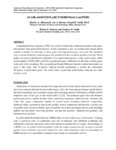 |
An air-assisted flare for biomass gasifiers | 2019 | Computational fluid dynamics (CFD) was used to simulate the combustion practice of the gases that produce from gasification process. In this simulation a new air-assisted flare design which capable to handle low flowrates of these gases with high performance was used. The simulated cases were perfor... | |
| 9 |
 |
Analysis of burner operation inside an enclosed ground flare | 2022 | Thermo-Acoustic Coupling; Enclosed Flare; LES CFD Model; Noise; Premixed Burner | An industrial enclosed ground flare used as part of a large refinery project has been analyzed to assess combustion stability and performance under low and high flow conditions. This flare includes a large combustion chamber directly above the burner deck with Low Flow (LF) burners that fire up to 9... |
| 10 |
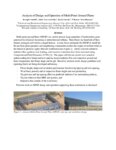 |
Analysis of design and operation of multi-point ground flares | 2022 | Multi-point ground flares (MPGF) are used to process large quantities of hydrocarbon gases generated in chemical processing or petrochemical refining. These flares use hundreds of flare burners arranged and fired in a staged fashion. A wind fence surrounds the MPGF to shield the flames from plant op... | |
| 11 |
 |
Annual Report: University of Utah Staff Advisory Committee (UUSAC), 2013-2014 | 2014 | Annual report | Annual report of the University of Utah Staff Advisory Committee for the 2013-2014 fiscal year. The contents include the Development Committee, Legislative Committee, Events Committee, Communications & Selections Committee and the Executive Board & Committee Chairs. |
| 12 |
 |
Budget (UUSAC 2014-09) | 2014-09 | Operating budget; Scholarship account | Budget and expenditures for operating and scholarship accounts. |
| 13 |
 |
Capturing the effect of near-and far-field dynamics on the combustion efficiency of multi-point ground flares | 2022 | Multi-point ground flares are frequently used in scenarios where flare gas flow rates can be high and pollution (noise, light, smoke) needs to be minimized. We have applied Arches, a large eddy simulation (LES) tool that we have developed for capturing the dynamics of flares (turbulent mixing, local... | |
| 14 |
 |
CFD development for fired heater applications | 2022 | Industry values the ability to ‘virtually' verify and optimize burner performance through CFD simulation and to evaluate the suitability of burner and furnace designs. Inaccurate results may lead us to falsely reject good burner designs or accept a poor design. Field problems can be far more expen... | |
| 15 |
 |
Chemical looping combustion reactions and systems: task 5 topical report, Utah Clean Coal Program | 2014-03 | ICSE; Chemical looping combustion; CLC; Chemical looping with oxygen uncoupling; CLOU; Fuel-combustion technology; Economic CO2 capture; Oxygen Carriers; Simulation of dense-phase flows; Electric power; Solid fuel combustion | Chemical Looping Combustion (CLC) is one promising fuel-combustion technology, which can facilitate economic CO2 capture in coal-fired power plants. It employs the oxidation/reduction characteristics of a metal, or oxygen carrier, and its oxide, the oxidizing gas (typically air) and the fuel source ... |
| 16 |
 |
Clean and Secure Energy from Coal - Final report, Utah Clean Coal Program | 2015-02 | coal; Utah Clean Coal Program; domestic coal resources; CO2 capture; CO2 combustion; stationary power generation; V/UQ; oxy-coal combustion; high-pressure, entrained-flow coal gasification; chemical looping combustion; underground coal thermal treatment; mercury control; environmental issues; legal ... | The University of Utah, through their Institute for Clean and Secure Energy (ICSE), performed research to utilize the vast energy stored in our domestic coal resources and to do so in a manner that will capture CO2 from combustion from stationary power generation. The research was organized around t... |
| 17 |
 |
Clean and secure energy from domestic oil sands and oil shale resources: Quarterly progress report - January 2014-March 2014 | 2014 | domestic oil shale; domestic oil sands; ICSE; CO2 management; liquid fuel production; in-situ thermal processing of oil shale; oil production | The Clean and Secure Energy from Domestic Oil Shale and Oil Sands Resources program, part of the research agenda of the Institute for Clean and Secure Energy (ICSE) at the University of Utah, is focused on engineering, scientific, and legal research surrounding the development of these resources in ... |
| 18 |
 |
Clean and secure energy from domestic oil shale and oil sands resources: Quarterly progress report - April 2013-June 2013 | 2013 | domestic oil sands; domestic oil shale; ICSE; unconventional fuels development; life-cycle analysis | The Clean and Secure Energy from Domestic Oil Shale and Oil Sands Resources program, part of the research agenda of the Institute for Clean and Secure Energy (ICSE) at the University of Utah, is focused on engineering, scientific, and legal research surrounding the development of these resources in ... |
| 19 |
 |
Clean and secure energy from domestic oil shale and oil sands resources: Quarterly progress report - April 2014-June 2014 | 2014 | domestic oil shale resources; domestic oil sands resources; ICSE; developing oil resources; CO2 management; utilization of oil shale and oil sands; liquid fuel production; in-situ thermal processing of oil shale | The Clean and Secure Energy from Domestic Oil Shale and Oil Sands Resources program, part of the research agenda of the Institute for Clean and Secure Energy (ICSE) at the University of Utah, is focused on engineering, scientific, and legal research surrounding the development of these resources in ... |
| 20 |
 |
Clean and secure energy from domestic oil shale and oil sands resources: Quarterly progress report - January 2013-March 2013 | 2013 | clean energy; domestic fuels; oil shale resources; oil sands resources; CO2 management; liquid fuel procuction; in-situ thermal processing; oil shale processing | The Clean and Secure Energy from Domestic Oil Shale and Oil Sands Resources program, part of the research agenda of the Institute for Clean and Secure Energy (ICSE) at the University of Utah, is focused on engineering, scientific, and legal research surrounding the development of these resources in ... |
| 21 |
 |
Clean and Secure Energy from Domestic Oil Shale and Oil Sands Resources: Quarterly progress report - January 2015 to March 2015 | 2015 | quarterly report; domestic oil shale resources; domestic oil sands resources; unconventional fuels; oil shale; oil sands | The Clean and Secure Energy from Domestic Oil Shale and Oil Sands Resources program, part of the research agenda of the Institute for Clean and Secure Energy (ICSE) at the University of Utah, is focused on engineering, scientific, and legal research surrounding the development of these resources in ... |
| 22 |
 |
Clean and secure energy from domestic oil shale and oil sands resources: Quarterly progress report - Jul. 2013-Sept. 2013 | 2013 | domestic oil shale resources; domestic oil sands resources; utilization of oil shale and oil sands with CO2 management; liquid fuel production | The Clean and Secure Energy from Domestic Oil Shale and Oil Sands Resources program, part of the research agenda of the Institute for Clean and Secure Energy (ICSE) at the University of Utah, is focused on engineering, scientific, and legal research surrounding the development of these resources in ... |
| 23 |
 |
Clean and secure energy from domestic oil shale and oil sands resources: Quarterly progress report - July 2014-September 2014 | 2014 | domestic oil shale; domestic oil sands; ICSE; utilization of oil shale and oil sands resources with CO2 management; liquid fuel production; in-situ thermal processing of oil shale; shale oil and pyrolysis products | The Clean and Secure Energy from Domestic Oil Shale and Oil Sands Resources program, part of the research agenda of the Institute for Clean and Secure Energy (ICSE) at the University of Utah, is focused on engineering, scientific, and legal research surrounding the development of these resources in ... |
| 24 |
 |
Clean and secure energy from domestic oil shale and oil sands resources: Quarterly progress report - October 2013-December 2013 | 2013 | domestic fuel resources; ICSE; CO2 management; unconventional fuels; Flameless Oxy-gas Process Heaters; Efficient CO2 Capture; Production Modules for CLEARuff | The Clean and Secure Energy from Domestic Oil Shale and Oil Sands Resources program, part of the research agenda of the Institute for Clean and Secure Energy (ICSE) at the University of Utah, is focused on engineering, scientific, and legal research surrounding the development of these resources in ... |
| 25 |
 |
Clean and secure energy from domestic oil shale and oil sands resources: Quarterly progress report - October 2014-December 2014 | 2014 | domestic oil shale; domestic oil sands; ICSE; CO2 management; clean energy; oil and gas production; liquid fuel production; thermal processing of oil shale/sands | The Clean and Secure Energy from Domestic Oil Shale and Oil Sands Resources program, part of the research agenda of the Institute for Clean and Secure Energy (ICSE) at the University of Utah, is focused on engineering, scientific, and legal research surrounding the development of these resources in ... |
| 26 |
 |
Clean and secure energy from domestic oil shale and oil sands resources: Quarterly progress report: April 2013 to June 2013 | 2013 | Quarterly Progress Report; April 2013 to June 2013; DE-FE0001243; Oil Shale; Oil Sands; CO2 management; Uinta Basin; Greenhouse gas; GHG emissions; oxyfiring; Utah; WTP; Ex situ; In situ | The Clean and Secure Energy from Domestic Oil Shale and Oil Sands Resources program, part of the research agenda of the Institute for Clean and Secure Energy (ICSE) at the University of Utah, is focused on engineering, scientific, and legal research surrounding the development of these resources in ... |
| 27 |
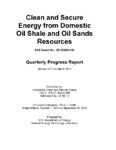 |
Clean and secure energy from domestic oil shale and oil sands resources: Quarterly progress report: January 2013 to March 2013 | 2013 | ICSE; Domestic oil shale; Oil sands; CO2 management; AMSO; Uinta Basin; Kerogen | The Clean and Secure Energy from Domestic Oil Shale and Oil Sands Resources program, part of the research agenda of the Institute for Clean and Secure Energy (ICSE) at the University of Utah, is focused on engineering, scientific, and legal research surrounding the development of these resources in ... |
| 28 |
 |
Clean and secure energy from domestic oil shale and oil sands resources: Quarterly progress report: July 2013 to September 2013 | 2013 | Quarterly progress report; July 2013 to September 2013; DE-FE0001243; CO2 management; oxyfiring; CO2 capture; Unconventional fuels; Uinta Basin; Utah; Oil shale; Oil sands; Greenhouse gas control; NER; NEER; GHG; In situ; Ex situ | Disclaimer: "This report was prepared as an account of work sponsored by an agency of the United States Government. Neither the United States Government nor any agency thereof, nor any of their employees, makes any warranty, express or implied, or assumes any legal liability or responsibility for th... |
| 29 |
 |
Clean and secure energy from domestic oil shale and oil sands resources: Quarterly progress report: October 2012 to December 2012 | 2013-01 | ICSE; Oil shale; oil sands; CO2 management; Uinta Basin; Liquid fuel production; In-situ thermal processing; White River oil shale; Green River Formation; American Shale Oil; AMSO; X-ray flourescence; Pyrolysis; Demineralized kerogen | The Clean and Secure Energy from Domestic Oil Shale and Oil Sands Resources program, part of the research agenda of the Institute for Clean and Secure Energy (ICSE) at the University of Utah, is focused on engineering, scientific, and legal research surrounding the development of these resources in ... |
| 30 |
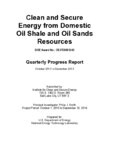 |
Clean and secure energy from domestic oil shale and oil sands resources: Quarterly progress report: October 2013 to December 2013 | 2014 | ICSE; Quarterly report; Clean and secure energy; Oil shale; Oil sands; Uinta Basin; CO2 management; AMSO; Greenhouse gas control; Shale formation; In situ; Ex situ; TEA-C | EXECUTIVE SUMMARY The Clean and Secure Energy from Domestic Oil Shale and Oil Sands Resources program, part of the research agenda of the Institute for Clean and Secure Energy (ICSE) at the University of Utah, is focused on engineering, scientific, and legal research surrounding the development of t... |
| 31 |
 |
Clearing the Path | 2018-01 | Student success; University of Utah | A strategic student success agenda. |
| 32 |
 |
Clearsign core process burners and boiler burners - burner scaling and field results | 2022 | During previous AFRC Industrial Combustion Symposia, ClearSign Technologies Corporation introduced its ClearSign Core technology currently used in our Ultra Low NOx burner products. These ClearSign Core products have now been developed for different types of equipment applications to meet stringent ... | |
| 33 |
 |
Effect of operating parameters on fired heater tube skin temperature measurement accuracy & the development of new improved tube skin thermocouple | 2022 | Refineries are often faced with challenges to meet production target, improve efficiency, process opportunity crudes with limited information on fouling characteristics etc. The common parameter that often becomes constraining are the tube skin temperatures which are critical in maintaining the inte... | |
| 34 |
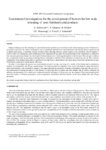 |
Experimental investigation for the development of burners for low scale reheating of semi-finished metal products | 2019 | recuperative burner; fuel rich combustion; direct fired furnace; scale reduction; radiant tube | Industrial furnaces for the reheating of semi-finished metal products are often direct fired with natural gas and air. Oxidation of the metals exposed to the furnace atmosphere causes significant material losses and additional work during furnace operation and in further processing. A reheating conc... |
| 35 |
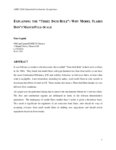 |
Explaining the "three inch rule": why model flares don't match full-scale | 2022 | It was Pohl and co-workers who discovered the so-called "Three Inch Rule" in their work on flares in the 1980s. They found that model flares with pipe diameter less than three inches do not have the same Combustion Efficiency (CE) and stability behaviour as full-scale flares, at least when wind is n... | |
| 36 |
 |
Final report of the joint NSF-NSFC workshop on combustion related to sustainable energy | 2014-03-10 | Jinxi hotel; NSF-NSFC workshop; combustion; sustainable energy | A workshop on Combustion Related to Sustainable Energy was held in Hangzhou, China on March 10-12, 2014. The workshop was jointly sponsored by the U.S. National Science Foundation (NSF) and by the National Science Foundation in China (NSFC). The purpose of the workshop was to bring together a limite... |
| 37 |
 |
Flare combustion index in lieu of combustion zone net heating value | 2020 | Flares are commonly used at industrial facilities (e.g., oil and gas extraction and production sites, gas processing plants, oil refineries, and petrochemical manufacturing plants) to safely dispose of process waste gases. Waste gases may be produced due to process upset or because they are unrecove... | |
| 38 |
 |
Flare regulatory update | 2019 | The United States Environmental Protection Agency (USEPA) revised the regulations for the refinery through the Refinery Sector Rule (RSR) revisions to NESHAP CC and UUU (aka MACT CC and MACT UUU). The USEPA is expected to propose revisions to the Ethylene MACT and the Hazardous Organic NESHAP (HON) ... | |
| 39 |
 |
Gasification studies: Task 4 topical report, Utah Clean Coal Program | 2014-02-06 | ICSE; Gasification; Large-eddy simulation; One-dimensional turbulence: Radiation; Soot formation; Entrained-flow coal gasification; Gasification kinetics; Slag formation | A key objective of the Task 4 activities has been to develop simulation tools to support development, troubleshooting and optimization of pressurized entrained-flow coal gasifiers. The overall gasifier models (Subtask 4.1) combine submodels for fluid flow (Subtask 4.2) and heat transfer (Subtask 4.3... |
| 40 |
 |
Installation of lean premix and remote fuel staging system in industrial process heater for next generation nox emissions control | 2022 | John Zink Hamworthy Combustion (JZHC) has completed the first installation and startup of the SOLEX combustion system in the Vacuum Tower Feed Furnace at a GS Caltex refinery in South Korea. The patented SOLEX™ burner compromises a lean premix zone of combustion, where the air-to-fuel ratio (AFR) ... | |
| 41 |
 |
Investigative approach to address thermoacoustic vibration in gas-fired heaters and boilers | 2022 | Industrial gas-fired boilers, furnaces and heaters occasionally encounter low-frequency vibrations generated by dynamic feedback between the burner (or burners) and acoustic modes in adjacent cavities in the main combustion chamber or ductwork. Feedback occurs when pressure pulses associated with ac... | |
| 42 |
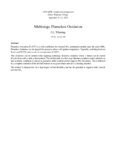 |
Multistage flameless oxidation | 2019 | Flameless Oxidation (FLOX®) is a well established low thermal NOx combustion method since the early 1990s. Flameless Oxidation can be applied for processes above self ignition temperature. Typically, switching between flame- and FLOX-mode occurs at a temperature of 850°C. This restriction can be o... | |
| 43 |
 |
Neutron imaging of heterogeneous solid fuels under heating | 2019 | Solid-fuel pyrolysis, gasification, and combustion continue to play an important role in the industrial and utility sectors. Behavior of heterogeneous fuels such as biomass (e.g., wood and grasses), municipal solid waste (MSW), and coal is less understood on the micro than the macro scales, particul... | |
| 44 |
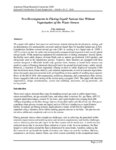 |
New developments in flaring liquid natural gas without vaporization of the waste stream | 2020 | This paper will explore best practices and lessons learned during the development, testing, and implementation of a mechanically atomized multi-jet liquid flare for liquified natural gas (LNG). Liquefaction facilities convert natural gas into LNG by cooling it to a liquid state at -259⁰F (- 162⁰... | |
| 45 |
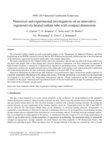 |
Numberical and experimental investigations on an innovative, regeneratively heated radiant tube with compact dimensions | 2019 | heat treatment; radiant tube; regenerative heating; staged combustion | The presented, public funded research cooperation project of the Department for Industrial Furnaces and Heat Engineering at the RWTH Aachen University and the WS Wärmeprozesstechnik GmbH main aim is the development of an innovative, regeneratively heated radiant tube with compact dimensions. The ma... |
| 46 |
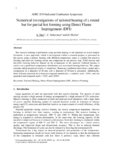 |
Numerical investigations of tailored heating of a round bar for partial hot forming using Direct Flame Impingement (DFI) | 2019 | Tailored Heating; Direct Flame Impingement (DFI); Massive Forming | Hot massive forming is performed using uniform heating of the materials to avoid wrinkle formation. A new approach, which is investigated within a research project, is presented in this paper, using a tailored heating with different temperature zones to conduct hot massive forming and semi-hot formi... |
| 47 |
 |
Oxy-coal combustion studies - Task 3 topical report, Utah Clean Coal Program. | 2014-08 | oxy-coal combustion; Utah Clean Coal Program; oxy-coal; large eddy simulations; near-flame aerodynamics; pilot-scale oxy-CFB; single-particle oxy char oxidation; ash partitioning; carbon capture; pulverized coal-fired power plants | The objective of this task is to move toward the development of a predictive capability with quantified uncertainty bounds for pilot-scale, single-burner, oxy-coal operation. This validation research brings together multi-scale experimental measurements and computer simulations. The combination of s... |
| 48 |
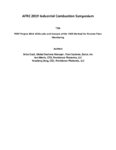 |
PERF Project 2014-10 Results and Analysis of the VISR Method for Remote Flare Monitoring | 2019 | The Petroleum Environmental Research Forum (PERF) is a non-profit organization created to provide a stimulus to and a forum for the collection, exchange, and analysis of research information relating to the development of technology for health, environment and safety; waste reduction; and system sec... | |
| 49 |
 |
Policy analysis of the Canadian oil sands experience-Topical Report | 2013-09 | Topical Report; Oil & Natural Gas Technology; October 1, 2009-September 30, 2014; Canadian Oil Sands; Policy; Subtask 6.2 | For those who support U.S. oil sands development, the Canadian oil sands industry is often identified as a model the U.S. might emulate, yielding financial and energy security benefits. For opponents of domestic oil sands development, the Canadian oil sands experience illustrates the risks that oppo... |
| 50 |
 |
Policy issues associated with using simulation to assess environmental impacts | 2014-11 | oil and natural gas technology; policy issues with using simulation; environmental impacts; simulation-based science; judicial assessments and models; environmental policymaking | This report examines the relationship between simulation-based science and judicial assessments of simulations or models supporting evaluations of environmental harms or risks, considering both how it exists currently and how it might be shaped in the future. This report considers the legal standard... |
| 51 |
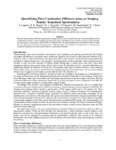 |
Quantifying flare combustion efficiency using an imaging fourier transform spectrometer | 2022 | Mid-wavelength infrared (MWIR) hyperspectral imaging may be used to calculate the flare combustion efficiency from standoff measurements, without requiring any information about the fuel flow rate to the flare. Species column densities are found using a spectroscopic model, which is combined with a ... | |
| 52 |
 |
Quarterly Progress Report Phase 3: Clean and Secure Energy from Coal - October 1, 2012 to December 31, 2012 | 2013-01-01 | domestic coal resources; CO2 capture; Oxy-Coal; Gasification | The University of Utah is pursuing research to utilize the vast energy stored in our domestic coal resources and to do so in a manner that will capture CO2 from combustion from stationary power generation. The research is organized around the theme of validation and uncertainty quantification throug... |
| 53 |
 |
Rates and mechanisms of oil shale pyrolysis: A chemical structure approach | 2014-11 | Green River oil shale; oil and natural gas technology; oil shale pyrolysis; chemical structure of oil shale | Three pristine Utah Green River oil shale samples were obtained and used for analysis by the combined research groups at the University of Utah and Brigham Young University. Oil shale samples were first demineralized and the separated kerogen and extracted bitumen samples were then studied by a host... |
| 54 |
 |
Regulatory promotion of emergent CCS technology - Topical report | 2014-01 | CCS technology; climate change; mitigation strategies; carbon capture and sequestration | Despite the growing inevitability of climate change and the attendant need for mitigation strategies, carbon capture and sequestration (CCS) has yet to gain much traction in the United States. Recent regulatory proposals by the U.S. Environmental Protection Agency (EPA), limited in scope to new-buil... |
| 55 |
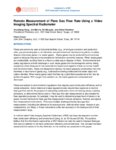 |
Remote measurement of Flare gas flow rate using a video imaging spectral radiometer | 2019 | Flares are commonly used at industrial facilities (e.g., oil and gas extraction and production sites, gas processing plants, oil refineries, and petrochemical manufacturing plants) to safely dispose of process gases (i.e. waste gases). Waste gases may be produced due to process upset or because they... | |
| 56 |
 |
Retreat notes (UUSAC) | 2013 | University of Utah staff | The year in review, communication and selection. |
| 57 |
 |
Retreat notes: 2014 (UUSAC) | 2014 | University of Utah staff | Communication and selection. |
| 58 |
 |
Sabbatical report (July 2015 - December 2015) | 2015-12 | Sabbitical; Oxford university; St. Stephen's House; Pusey House | Report of sabbatical leave for Peter Kraus, Marriott Library, University of Utah |
| 59 |
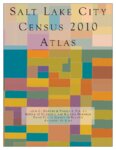 |
Salt Lake City census 2010 atlas | 2013-02 | Demographics; Salt Lake City; Utah; Census | This volume presents and analyzes results from the 2010 Census of Population and Housing. This mandatory enumeration is conducted by the federal government and is used to determine reapportionment and redistricting. This is the most complete record of population, households, and housing units that i... |
| 60 |
 |
Simplified analysis and practical mitigation techniques for induestrial boiler thermoacoustic vibration | 2019 | Industrial boiler systems are prone to mechanical vibration which can lead to premature component failures, emission non-compliance, and greatly increased ambient noise generation. Driving mechanisms, thermoacoustic phenomena, and system geometrical interactions are complex. General methods for accu... | |
| 61 |
 |
Staff Council Annual Report 2013-2014 (University of Utah Staff Advisory Committee) | 2014 | Annual report | University of Utah Staff Advisory Committee (UUSAC) annual report for fiscal year 2013-2014. Contents include Committee Highlights, Development Committee, Legislative Committee, EVents Committee, Communications & Selections Committee and Executive Board & Committee Chairs. |
| 62 |
 |
Staff council votes (University of Utah Staff Advisory Committee (UUSAC)) | 2014 | Votes; Staff council | Votes for individuals to serve on the staff council. |
| 63 |
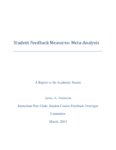 |
Student feedback measures: meta-analysis | 2013-03 | Student feedback; Faculty retention; Faculty promotion; Faculty tenure | This study was presented as an interim report from the Chair of the Student Course Feedback Oversight Committee to the oversight committee and to the Academic Senate Executive Committee in April, 2012. Over the ensuing year it has been updated with additional analyses and is provided here as a final... |
| 64 |
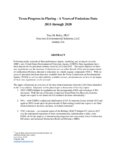 |
Texas progress in flaring - 6 years of emissions data 2015 through 2020 | 2020 | Following nearly a decade of flare performance inquiry, modeling, and testing in the early 2000s, new United States Environmental Protection Agency (USEPA) flare regulations have been enacted for the petroleum refinery sector in 2012 and 2015. The stated objective of these new regulations was th... | |
| 65 |
 |
Underground coal thermal treatment - Task 6 topical report, Utah Clean Coal Program | 2015-01 | transformational energy production; insitu thermal treatment of a coal seam; coal reserves; underground coal thermal treatment; Utah Clean Coal Program; coal resources | The long-term objective of this task is to develop a transformational energy production technology by in situ thermal treatment of a coal seam for the production of substitute natural gas and/or liquid transportation fuels while leaving much of the coal's carbon in the ground. This process converts ... |
| 66 |
 |
V/UQ of Generation 1 Simulator with AMSO Experimental Data | 2013-08 | Progress Report; Oil & Natural Gas Technology; V/UQ; AMSO DE-FE0001243 | As part of the capstone project, we have been working to create a high performance computing (HPC) computational fluid dynamics (CFD) simulation tool that would allow us to simulate in-situ thermal heating of oil shale. Using our HPC CFD tool, in the first phase of the project we have performed vali... |
| 67 |
 |
Validation results for core-scale oil shale pyrolysis | 2015-02 | oil and natural gas technology; validation results; core-scale oil shale pyrolysis; in situ production of oil from oil shale; oil shale; pyrolysis of oil shale | This report summarizes a study of oil shale pyrolysis at various scales and the subsequent development a model for in situ production of oil from oil shale. Oil shale from the Mahogany zone of the Green River formation was used in all experiments. Pyrolysis experiments were conducted at four scales,... |
| 68 |
 |
Validation/Uncertainty Quantification for Large Eddy Simulations of the heat flux in the Tangentially Fired Oxy-Coal Alstom Boiler Simulation Facility - Task 9 Topical Report, Utah Clean Coal Program | 2014-10 | large eddy simulations; Utah Clean Coal Program; heat flux; Tangenitally Fired Oxy-coal Alstom Boiler Simulation Facility; task 9; oxy-coal boilers; BSF; coal | The objective of this task is to produce predictive capability with quantified uncertainty bounds for the heat flux in commercial-scale, tangentially fired, oxy-coal boilers. Validation data came from the Alstom Boiler Simulation Facility (BSF) for tangentially fired, oxy-coal operation. This task b... |
1 - 200 of 68
